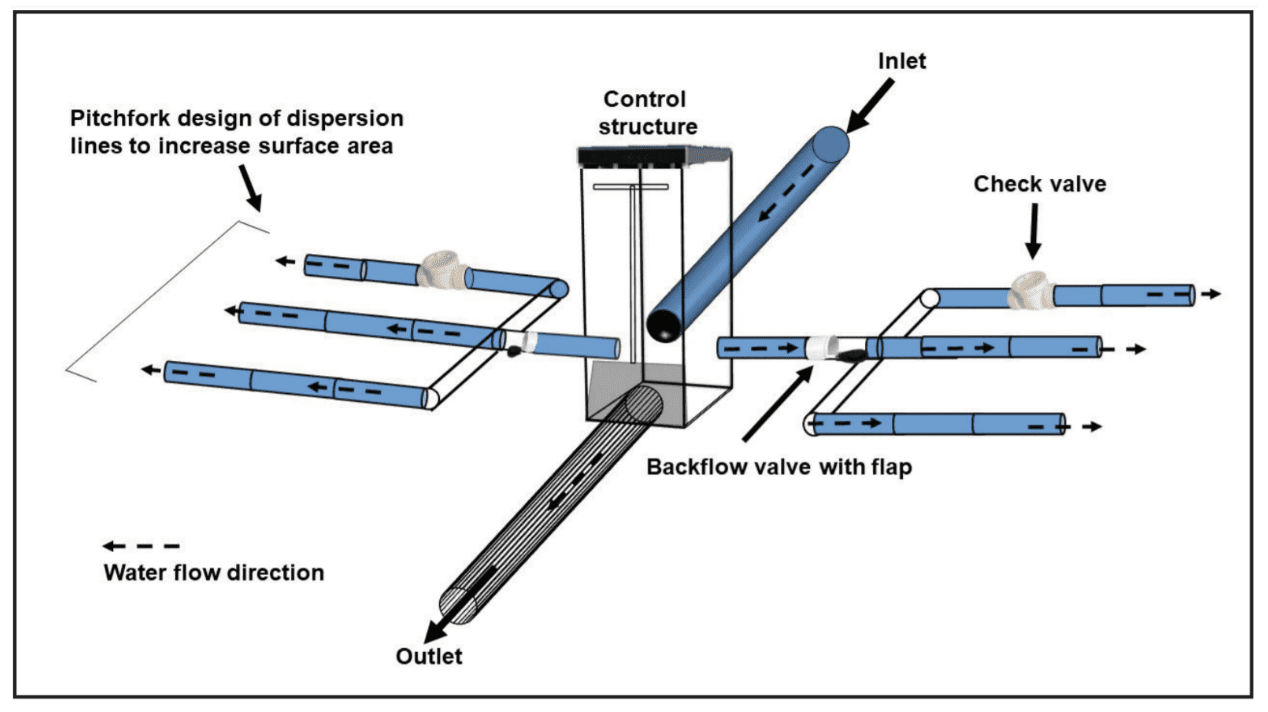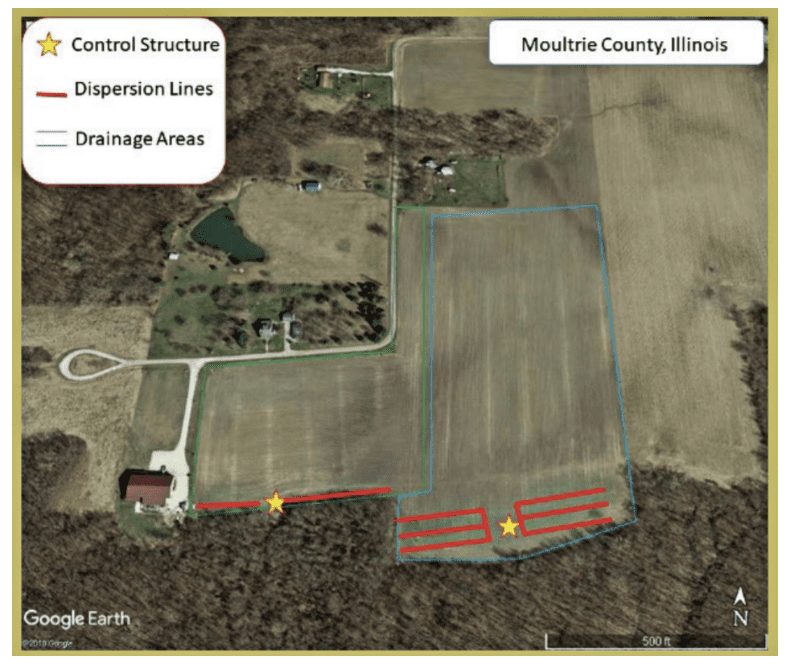U.S. soybean farmers continuously investigate ways to improve their sustainability. In tiled fields, saturated buffers are one management practice that prevents nutrient loss as excess water drains away.
Saturated buffers are areas of perennial vegetation between fields and waterways where tile outlets drain, according to the U.S. Soil and Water Conservation Society. The U.S. Department of Agriculture (USDA) Agricultural Research Service (ARS) adds that saturated buffers have four main components:
- A non-perforated drainpipe.
- A water control structure.
- A distribution pipe.
- A vegetated buffer strip of land at the edge of the field.
As water drains into the buffer, the water control structure forces into the perforated distribution pipe, where it is slowly pushed through the vegetated buffer, where soil microbes and plants absorb and break down nutrients, preventing them from being lost to the waterway. 1, 2
New research in Illinois, in the heart of the Midwest, has been demonstrating an alternative design of saturated buffers to address common challenges farmers have shared. The research, summarized by the Illinois Nutrient Research and Education Council (NREC), has identified ways to improve this management practice.
The research summary is shared from an Illinois NREC Investment Insight titled What’s ahead: New saturated buffer designs as an edge-of-field practice.
Researchers Jon Schoonover, Karl Williard and Gurbir Singh from the College of Agricultural Sciences, Southern Illinois University, Carbondale, Illinois, are building upon past research. Dr. Schoonover and his team are demonstrating an alternative design of saturated buffers that addresses commonly encountered issues with the Best Management Practices (BMP) of saturated buffers. The benefits and limitations of standard and two-stage saturated buffer designs in southern Illinois have already been established.
This new research looks at the alternative designs, as well as installation requirements and effectiveness under various field and climatic conditions. The research is taking place in collaboration with Illinois Farm Bureau, USDA-Natural Resource Conservation Service (USDA-NRCS), and the Illinois Chapter of the Land Improvement Contractors of America.
The team installed a newly designed saturated buffer system. The new design includes three retrofits to existing designs:
- A multi-pipe “pitchfork” drainage network for the saturating lines to treat more tile water by dispersing it over a greater area in the buffer.
- One-way backflow valves in the lateral lines leaving each side of the control structure to prevent backflow of groundwater into the control structure.
- Integrated shut off valves into the tile lines closest to the edge of the row crop field so they can be manually shut off, allowing the area to dry, prior to field operations.

The same new design will be installed in the same field with a standard saturated buffer to allow for side-by-side comparisons between the two systems under the same farm management, soil conditions, and climatic variables.

